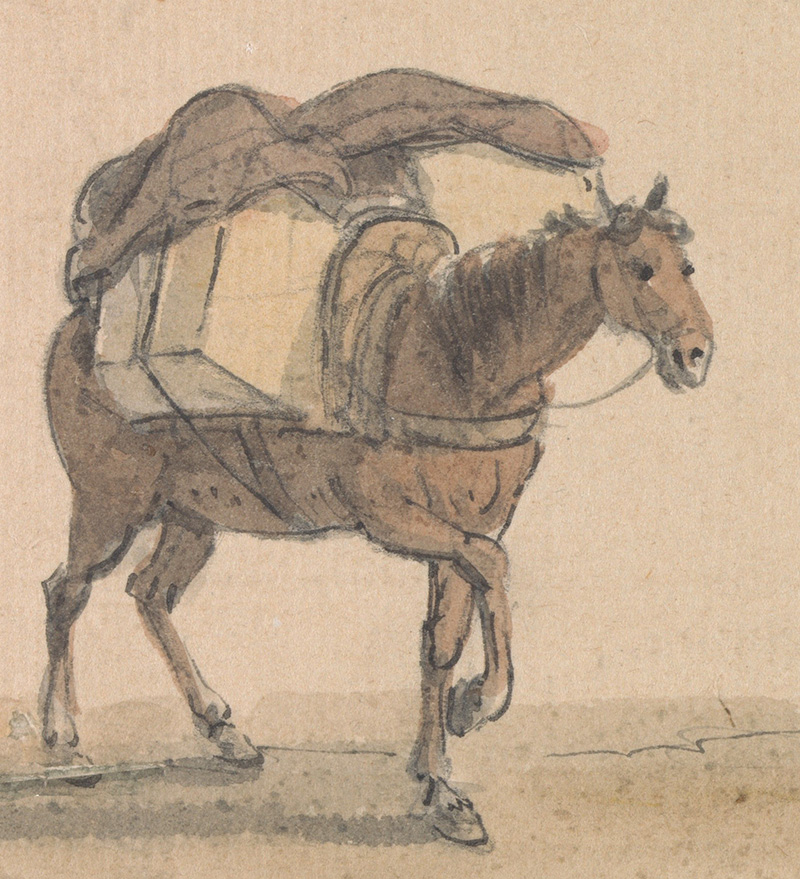
1663: A new Custom House for Topsham
Despite the high hopes and all the work, the new canal was a disappointment. Boats could only enter or leave it at high tide, and repairs sometimes closed it completely. During the Civil War (1642-1651) horses broke down the banks and fighting interrupted repairs.
Exeter had the premier wool market in England and cloth manufacture employed 80% of its citizens. Serge (a warm, lightweight woollen cloth) was in demand all over Europe and beyond. When bales were ready to ship, merchants opted to send them by packhorse to Topsham, rather than through the canal. Importers needing a quick delivery of coal, timber or wine chose to offload there, too.
In 1663, Exeter custom officials demanded a move to Topsham, where they could control goods more easily, and gained permission to build a Custom House there. Soon a timber building with handsome stone pillars graced Topsham Quay. A wooden ‘King’s Beam’ (for weighing goods to assess duty) probably stood where the 19th century iron beam stands today.

